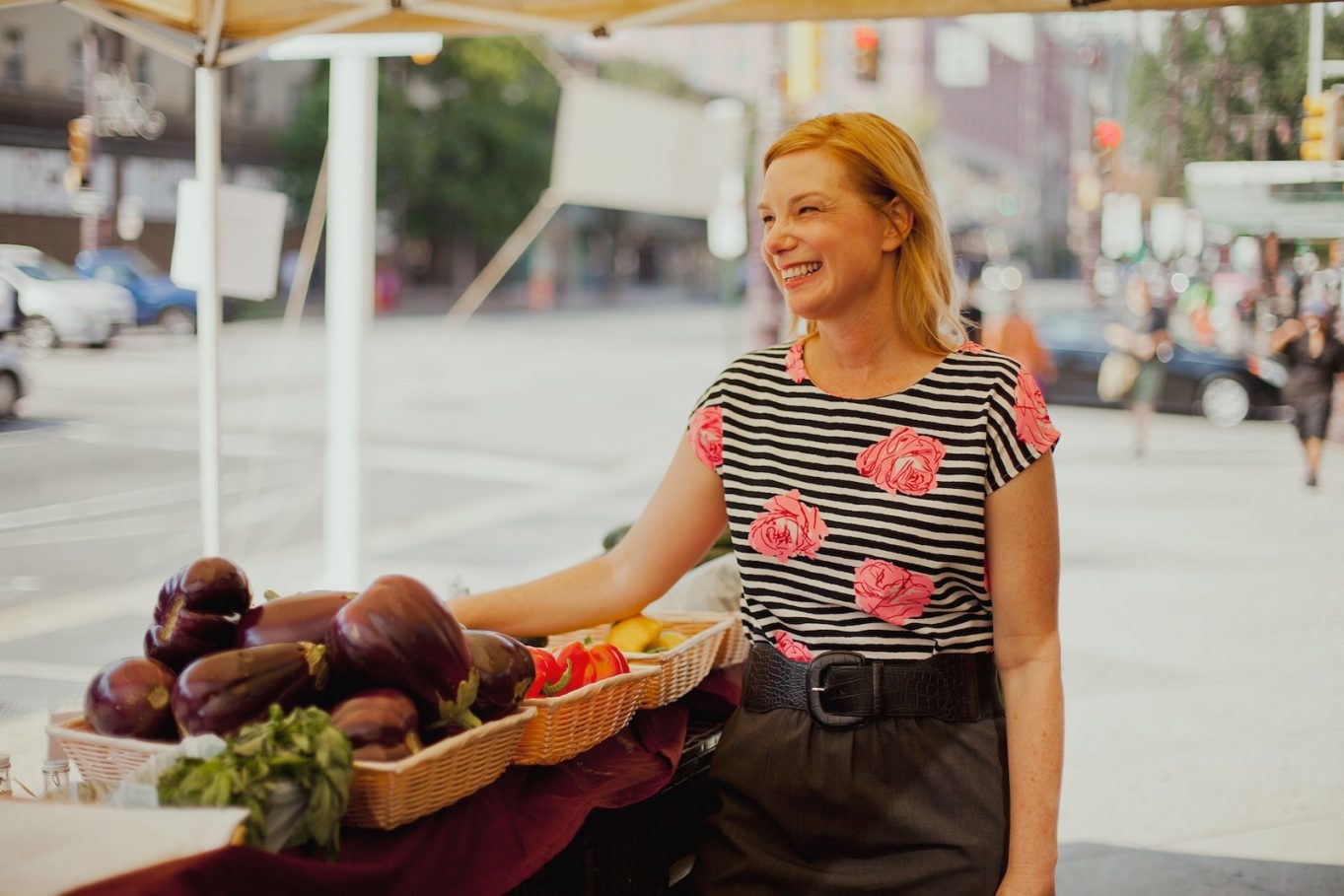In Food We Trust: Why Fresh Food is Critical to Our Health

The executive director of one of the nation’s leading healthy-food-access nonprofits shares why fresh choices are cornerstones of our health.
BY YAEL LEHMANN
It’s a lazy afternoon, and my eleven-year-old son and I are talking about snacks. It’s a bit of a tradition for us. As summer nears an end, we work together to come up with a list of healthy grab-and-go options for the inevitable five school days per week when he’ll find himself too hungry to wait for dinner. This routine is practical and strategic. Involving him in the decision-making process results in a cupboard stocked with foods he actually wants to eat. It’s also a teaching moment. With my guidance, he’s learning how to make healthful eating decisions.
This opportunity is not one I take lightly. As executive director of The Food Trust, a national nonprofit, based in Philadelphia, focused on access to healthy food, I know firsthand that knowledge and access are the cornerstones to making good nutritional choices. They’re also luxuries that many of us don’t have.
Today, over 29 million Americans don’t have easy access to nutritious, affordable food for a simple reason: They don’t live near a grocery store. When a community doesn’t have access to a market, people turn to foods that are accessible and inexpensive, invariably at corner stores or fast food restaurants, which are abundant in these communities. The corner store is an especially frequent destination for children, many of whom stop daily on the way to and from school to purchase snacks, often chips, candy, and soda, averaging 360 calories per visit. Even if they wanted to choose a banana or yogurt, they might not be able to find it.
This isn’t working out well. You’ve probably heard the statistics: Our country’s childhood obesity epidemic threatens to make today’s children the first generation in our history with a shorter life span than their parents. In the commonwealth of Pennsylvania alone, nearly forty percent of students are overweight or obese.
Because of my role at The Food Trust, I regularly speak with people who are concerned about America’s nutrition-based health crisis and who are frustrated that there isn’t an easy solution. They’re right; it’s not simple
to get grocery stores into neighborhoods that need them, make healthy ingredients more affordable than a stack of chicken nuggets, or inspire generations raised on processed convenience foods to reach for carrots with hummus or apples with peanut butter. But our success at The Food Trust is evidence that big change can start with small, simple steps.
Twenty-three years ago, The Food Trust began with one farm stand placed in a Philadelphia community called Point Breeze, where it was hard to find fresh produce. Once a week, we set up one long table overflowing with fruits and vegetables. Before long, we started hearing from neighborhood folks that our “market” was changing the way they ate. In many cases, it was their only source of healthy food.
That sobering revelation has driven our passion ever since. In our more
than two decades of operation, we’ve worked with residents, teachers,
grocers, farmers, and policymakers in Philadelphia and across the country to change how we all think about healthy food and to increase its availability. Together, we’ve brought supermarkets to communities that have gone decades without one. We’ve helped corner-store owners add fresh produce and whole grains to their shelves. We’ve taken soda and junk food out of schools, and we’ve taught students to appreciate foods like apple and cherry tomatoes.
Today, we are over 130 employees strong. In 2014, mor than 400,000 people visited our network of 27 outdoor farmers’ markets, located mostly in lower-income neighborhoods where fresh fruits and vegetables are scarce. We teach nutrition education to 65,000 kids each year. We’ve introduced 25,000 healthy products into corner stores. We host food truck festivals that bring together tens of thousands of Philadelphians to celebrate the joy of food. We are ranked by Philanthropedia as the number two high-impact children’s health nonprofit in the nation. Our work has even taken us to the White House. And it all started with one table of fresh food.
I’ve been with The Food Trust for 14 years, and the most important thing I’ve learned is the power of choice. With the right support systems in place, everyone can choose and afford healthy food in bodegas, supermarkets, and farmers’ markets. But how do we create choice for everyone?
The issue of poor food options and their relationship to poverty remains very real throughout the country. But our nation’s health issues are not exclusive to lower-income neighborhoods—nor are the solutions. We collectively benefit and suffer based on the health of our friends, family, communities, and nation. We also collectively influence one another, as well as the markets where we shop, the food companies that make the food we eat, and the food policymakers who can effect change.
In this light, there’s a lot we can do. In our own families, we can teach our kids why oranges are better than orange soda, take our children to local farms to show them how food gets from the field to their plate, or make a healthy family dinner together.
Getting involved in the greater food-access movement is just as doable. We can support our local economy by buying fruits and veggies at the farmers’ market. We can purchase healthy foods at corner stores to encourage corner-store owners to continue to stock them. We can suggest that our kids’ teachers host food tastings, cooking demonstrations, and nutrition lessons and help make those activities happen. We can volunteer at a local food bank or make a donation to a food-access organization. And we can follow healthy-food financing legislation in our own states and vote to support efforts that bring healthy food to low- income communities.
Being a mom has brought The Food Trust’s work into focus for me in a way I never expected. When I watch my son grab a pear off the kitchen counter like it’s no big deal, I know I’m making a difference in his life. And if we can change one child’s food environment—help just one kid make healthier choices—then imagine what we can do for one family or one neighborhood or one state or even for the whole country if we roll up our sleeves and get to work.
National Food Access Organizations
Action for Healthy Kids
actionforhealthykids.org
Alliance for a Healthier Generation
healthiergeneration.org
American Heart Association
heart.org
California Center for Public Health Advocacy
publichealthadvocacy.org
California Food Policy Advocates
cfpa.net
Feeding America
feedingamerica.org
Let’s Move
letsmove.gov
National Farm to School Network
farmtoschool.org
Newman’s Own Foundation
newmansownfoundation.org
PolicyLink
policylink.org
Prevent Obesity
preventobesity.net
Robert Wood Johnson Foundation
rwjf.org
Wholesome Wave
wholesomewave.org

